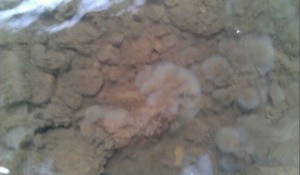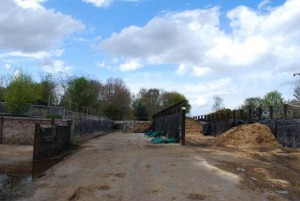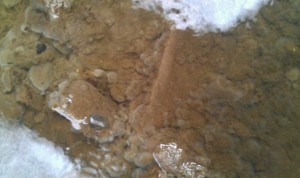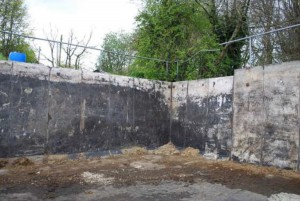THE world-famous research institute that created Dolly the Sheep seriously contaminated a river next to a primary school – but escaped without a fine or the incident being made public.
The Roslin Institute allowed silage effluent to escape into Bilston Burn for several months, damaging the ecology of the stream for half a mile with “dense sewage fungus”.
But the Scottish Environmental Protection Agency (SEPA) let Roslin off with a final warning letter and the pollution incident three years ago was not made public.
Bilston Burn flows past the grounds of Roslin Primary School annexe. Shocked locals today condemned SEPA for not warning them about the contamination in an area where children and animals regularly play.
Silage effluent is liquid waste from harvested crops and is 200 times stronger than untreated domestic sewage. It kills fish by starving them of oxygen until they suffocate.
The Roslin Institute, part of Edinburgh University and employing around 500 people, hit the headlines in 2006 after it cloned Dolly.
A Freedom of Information request to SEPA shows that in late 2012 and early 2013 the institute polluted at least 800m of Bilston Burn with silage effluent from faulty silage pits and tanks.
In a letter to SEPA dated 20 January 2013, Tim King, Deputy Easter Bush Operating Manager at the Royal School of Veterinary School, wrote: “The University of Edinburgh regret the unfortunate incident that apparently resulted in the pollution of the Bilston Burn with silage effluent and is firmly committed to ensure that this type of incident will not be repeated.”
They claim the reasons for this were, “failure of our waste management procedures during an exceptionally wet period of weather during the Christmas and New Year period when we were forced to employ temporary staff due to ill health.”
An ecology report on the 18 January 2013 by SEPA’s testing laboratory wrote: “The results from this survey show that in the input of silage effluent is causing a significant downgrade of ecological quality in the Bilston Burn for a length of at least 800m along its course.
“It is probable that the discharge has been occurring for a number of months given the length of the burn that is affected by dense sewage fungus.”
In a “final warning letter” to Roslin Institute dated 24 April 2013, Simon Cole, Unit Manager for Edinburgh and the Lothians Operational Team at SEPA, wrote: “Any further contravention of the above legislation is likely to result in enforcement action.”
But many are angry at SEPA for not taking action then to warn them.
Paul Farmer, 38, said: “I’ve been taking my dog walks along the burn for years and didn’t know anything about any contamination. If there was, why wouldn’t locals have been told? It’s irresponsible for many reasons.”
Laura Mason, 40, has lived beside the burn for 18 years, said: “The kids walk along there and forever playing in the water. I’ve certainly never heard about that before I think it’s shocking nobody came and told us. Even a leaflet would be appreciate. It’s terrible.”
Midlothian Green Party councillor, Ian Baxter, said:” SEPA seem to be allowing too much leeway all the time. It sounds like quite a potential serious issue and very worrying.
“It doesn’t really send a clear message to other organisations if they are doing this. SEPA need to make it clear that this is simply unacceptable.”
And Friends of the Earth Scotland Director Dr Richard Dixon said: “It is very surprising that an institution with such a strong international reputation appears to have been so careless about protecting the environment. It the allegations of deliberate dumping of polluted material are proven very heavy fines should be imposed.”
A spokeswoman for the Roslin Institute said: “The University responded to SEPA immediately to make them aware of our plans to rectify the problem. Subsequently, the University undertook repairs and renovations of the facility and put in place new procedures.
“Representatives from SEPA made a further inspection of the farm in May 2013 and found our actions to be satisfactory for the prevention of future incidents. There has been no further release of silage effluent into Bilston Burn from the University farm.”
A spokesman for SEPA said: “Edinburgh University was issued a final warning following the incident and it is understood that extensive repair work and surveys were undertaken immediately to ensure no further pollution discharged to the local environment.
He added that they would warn about pollution “if it is considered that they may be significantly affected by the incident”.
He added: “If we become aware of a potential public health risk we will alert the local public health department.
“This leak had an impact on the ecology of the river but there were no perceived significant effects or risks beyond this which required water users or public health to be alerted.”




